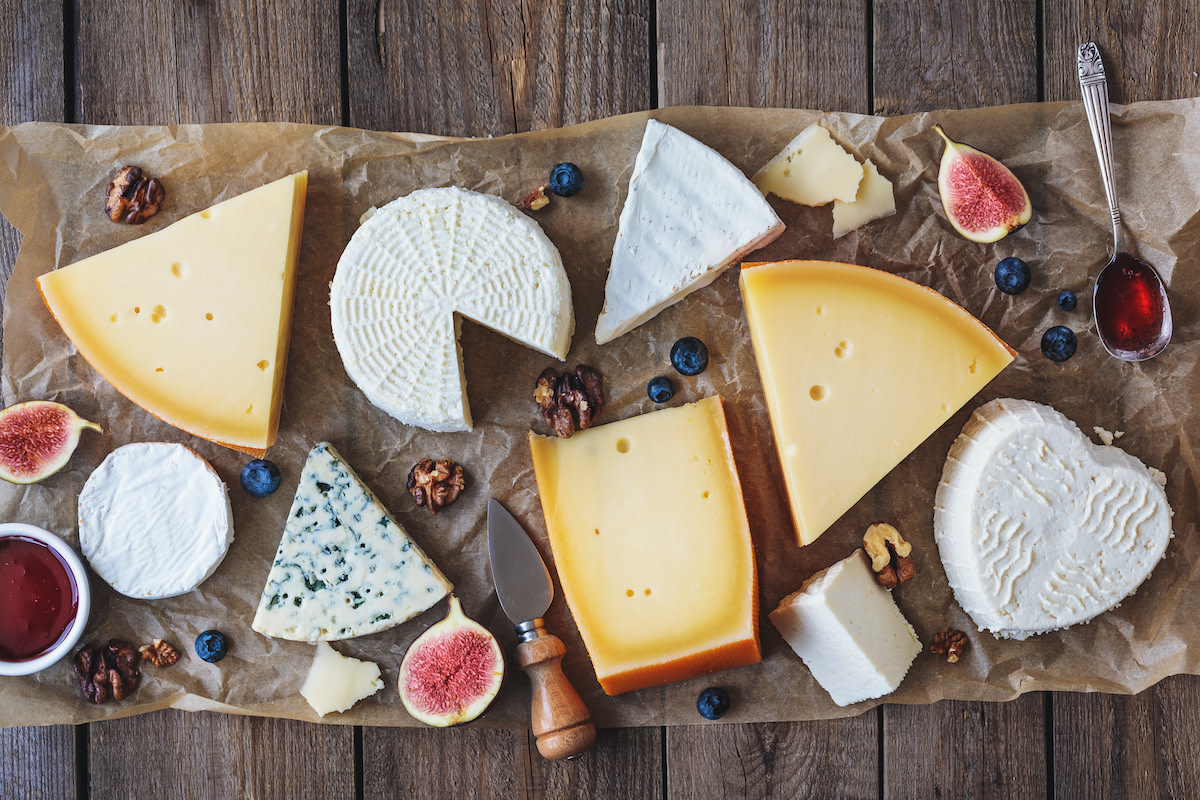4 Types of Cheese: How to Identify Different Types of Cheese
Written by MasterClass
Last updated: Feb 24, 2022 • 2 min read
Whether you're a cheese lover or a curious skeptic, learn more about the different types of cheese and how they're classified.
Learn From the Best
How Is Cheese Categorized?
The world of cheesemaking is vast and the varieties of cheese are numerous. To help make sense of all the different types of cheese, cheesemakers categorize cheeses based on a number of different factors, including moisture content, fat content, milk source, age, texture, length of fermentation, production method, and country or region of origin. Although no universal standard exists for categorizing cheeses, one of the most common methods is to group kinds of cheese by their level of firmness, ranging from soft to hard.
4 Types of Cheese
Though not an exact science, the following categories can be useful for grouping different types of cheese.
- 1. Soft cheese: Soft cheeses are cream cheeses or fresh cheeses that have matured for ten days or less. They are often spreadable, crumble easily, and are great for melting. Some common soft cheeses include cottage cheese, cheese curds, ricotta, Brie, Camembert, feta, queso blanco, fresh goat's milk chevre, mascarpone, and Taleggio.
- 2. Semi-soft cheese: Semi-soft cheeses include Havarti, Monterey Jack, Colby, Muenster, and pepper jack. Semi-soft cheeses are easily sliced, shredded, or cubed and melt easily. These varieties are made with whole milk and sometimes include the addition of heavy cream. Blue cheeses (cheese made with Penicillium cultures), such as Gorgonzola and Stilton, can fall into this category as well.
- 3. Semi-hard cheese: Also known as semi-firm cheeses, these cheeses fall somewhere in between a semi-soft cheese and a firm cheese. The Italian Provolone is a quintessential sandwich cheese that is pale yellow in color and has a mild sweetness. Semi-hard Swiss cheeses known for their fruity, nutty flavors include Emmental and Gruyere. Cheddar cheese (which originally hailed from the village of Cheddar in England) is also considered a semi-hard cheese.
- 4. Hard cheese: Hard cheeses are aged cheeses that have been cured for anywhere from several months to several years. Hard cheeses have a longer shelf-life due to their low moisture content. Asiago, Parmesan, Parmigiano-Reggiano, and Romano cheeses are all hard cheeses that hail from Italy. Comté is a French cheese that's a popular choice for cheese boards. Hard cheeses tend to have a thick, hard rind. They are easily sliced or grated and make a great addition to pasta, soups, and salads.
4 Common Types of Dairy Used for Making Cheese
Several different types of milk are used for making cheese. Consider some of the most common milks used in cheese production and their characteristics.
- 1. Cow's milk: Cow's milk is one of the most popular dairies used for making cheese. It has a subtle, buttery sweet flavor and creamy consistency. Its mild flavor lends itself to a variety of different cheese-making processes.
- 2. Goat's milk: Fresh chevre is the ubiquitous goat's milk cheese. However, many different types of cheese are made using goat's milk, including Gouda, Brie, and Cheddar. It has a funky, tangy taste.
- 3. Buffalo's milk: Water buffalo are a popular source of dairy for soft Italian cheeses, including ricotta, burrata, and mozzarella. Mozzarella cheese that is made with buffalo's milk is called Mozzarella di Bufala. It has an extremely buttery flavor.
- 4. Sheep's milk: Sheep's milk has a grassy, tangy flavor. It's often used to make Manchego, Pecorino, Roquefort, and feta.
Want to Learn More About Cooking?
Become a better chef with the MasterClass Annual Membership. Gain access to exclusive video lessons taught by the world’s best, including Gordon Ramsay, Gabriela Cámara, Chef Thomas Keller, Dominique Ansel, Yotam Ottolenghi, Alice Waters, and more.
